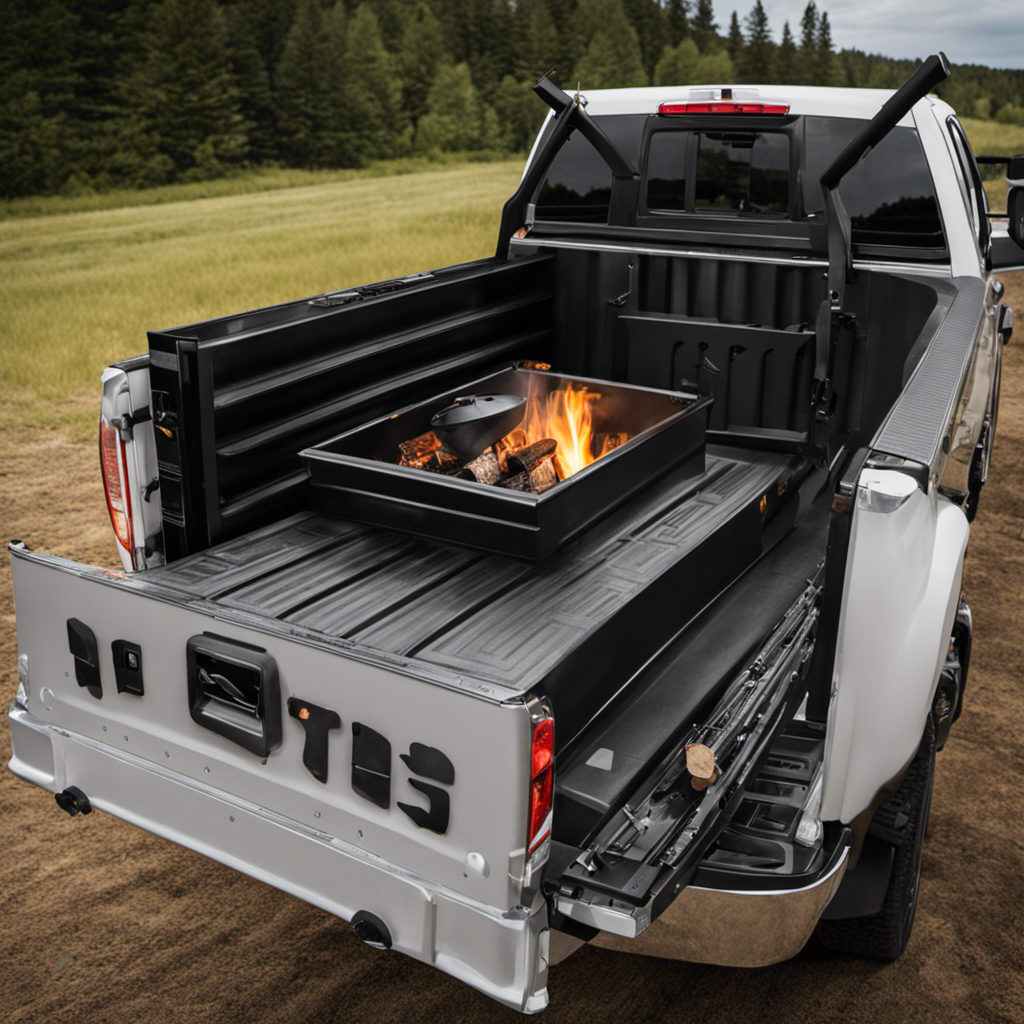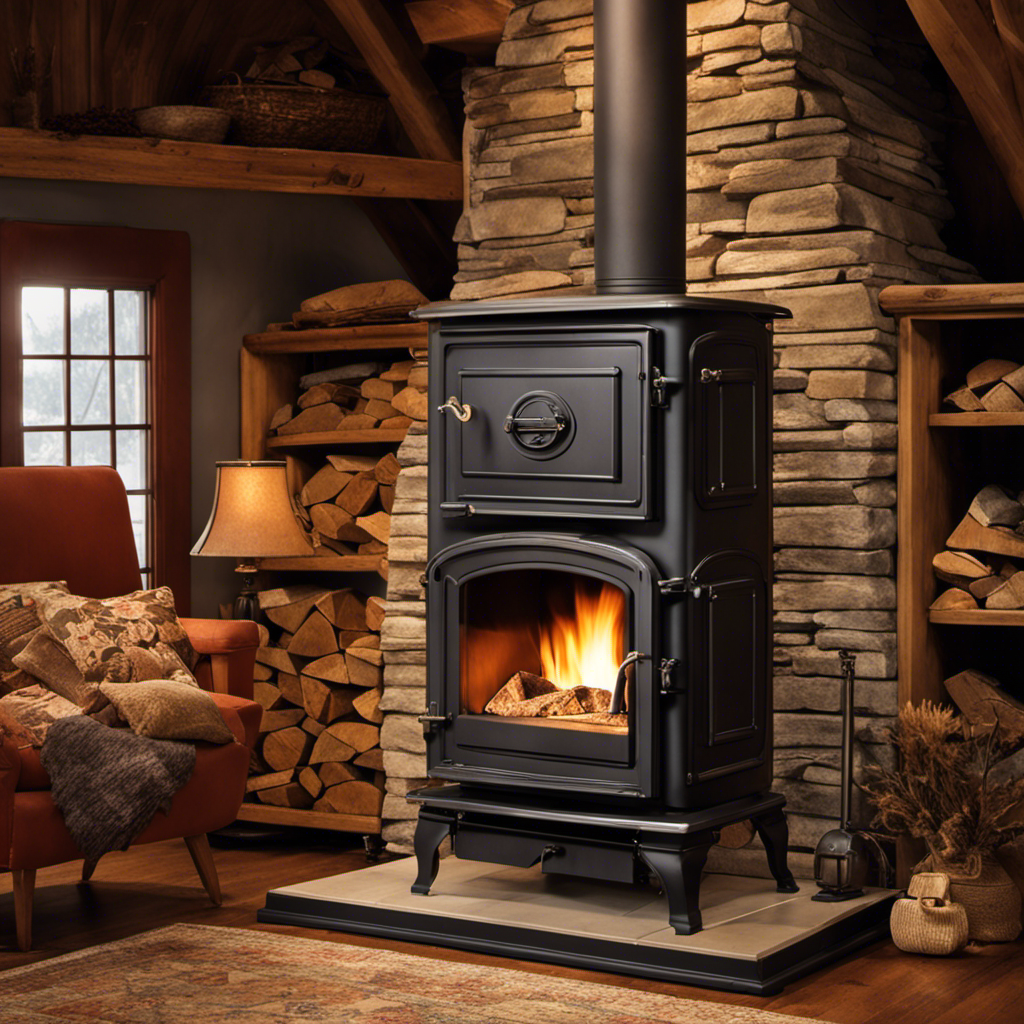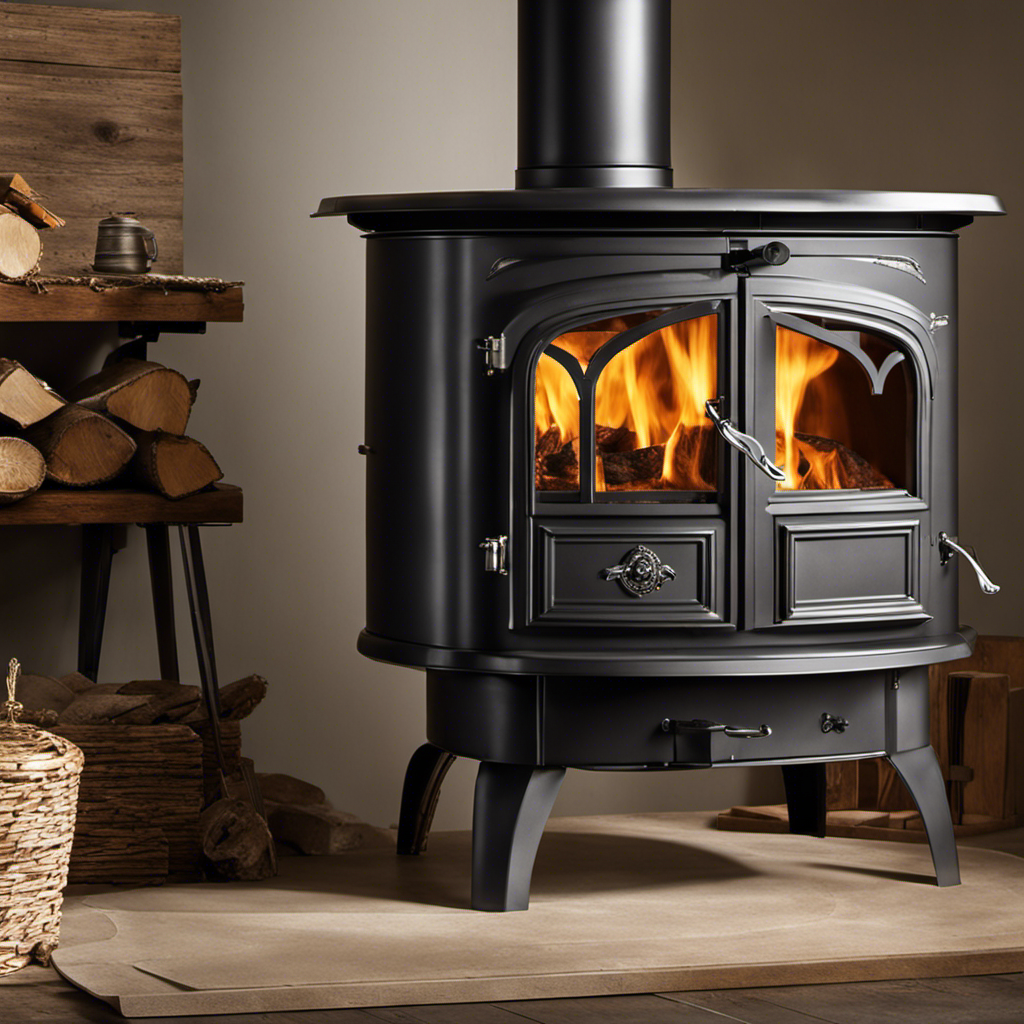Similar to a vigilant guardian overseeing a raging wildfire, the damper of a wood stove is essential for ensuring safety and efficiency. As a homeowner, I recognize the significance of routinely inspecting this critical element.
In this article, I will guide you through the process of inspecting your wood stove’s damper, providing you with the necessary tools and troubleshooting tips along the way. By following these steps, you can ensure a well-functioning damper and enjoy cozy nights by the fire with peace of mind.
Key Takeaways
- Regular inspection ensures a safe and efficient wood stove.
- Signs of a faulty damper include difficulty opening or closing, excessive smoke, or lack of heat output.
- Tools needed for damper inspection include a flashlight, mirror, chimney brush or specialized cleaner, and protective gloves and eyewear.
- Prompt addressing of damper issues and regular cleaning are essential for optimal performance.
Importance of Checking the Damper
I always make sure to check the damper before starting a fire in my wood stove. The damper plays a crucial role in regulating the airflow and controlling the combustion process.
There are several reasons why a damper can get stuck. One common cause is a buildup of creosote, a tar-like substance that accumulates on the damper over time. Another reason could be rust or corrosion, which can hinder the damper’s movement.
It’s important to regularly inspect the damper for any signs of damage or wear. Some signs of a faulty damper include difficulty opening or closing, excessive smoke in the room, or a lack of heat output.
Tools Needed for Damper Inspection
While inspecting the damper, it’s important to have the necessary tools, such as a flashlight and a mirror, to properly assess its condition. Signs of a faulty damper can include difficulty in opening or closing the damper, excessive smoke or soot buildup, or a strong draft even when the damper is closed.
When it comes to damper cleaning techniques, it’s crucial to remove any built-up creosote or debris that can hinder its functionality. This can be done by using a chimney brush or a specialized damper cleaner.
Inspecting the damper regularly and addressing any issues promptly is essential for maintaining a safe and efficient wood stove. Remember to take the necessary precautions, such as wearing protective gloves and eyewear, when working with the damper to ensure personal safety.
Step-by-Step Guide to Checking the Damper
To check the damper, simply shine a flashlight into the chimney and look for any obstructions or damage. Regular maintenance of the damper is crucial to ensure the efficient functioning of a wood stove.
Here are the benefits of regular damper maintenance:
-
Increased energy efficiency: A properly functioning damper helps to seal the chimney when the stove isn’t in use, preventing warm air from escaping and cold air from entering the house. This leads to reduced energy consumption and lower utility bills.
-
Improved indoor air quality: A malfunctioning damper can allow smoke and harmful gases, such as carbon monoxide, to enter the living space. Regular maintenance ensures that the damper is functioning properly, preventing these pollutants from infiltrating your home.
-
Extended lifespan of the wood stove: By regularly checking and maintaining the damper, you can identify and fix any issues before they become major problems. This helps to prolong the lifespan of your wood stove and avoid costly repairs.
Common Damper Issues and Troubleshooting Tips
The most common damper issues include a stuck damper and a noisy damper, but with some troubleshooting tips, these problems can be easily resolved.
When it comes to a stuck damper, the first thing to check is if there’s any debris or soot buildup preventing it from opening or closing properly. Regular damper cleaning is crucial to prevent this issue.
Another sign of a faulty damper is when it becomes noisy during operation. This could indicate a loose or worn-out damper mechanism that needs to be tightened or replaced.
It’s important to address these issues promptly to ensure the efficient and safe operation of your wood stove. By following these troubleshooting tips and performing regular damper cleaning, you can maintain optimal performance and prolong the lifespan of your damper.
Maintenance Tips for a Well-Functioning Damper
I find it essential to regularly inspect and lubricate my damper to ensure its efficient and long-lasting operation. Neglecting the maintenance of a damper can lead to various issues that can affect the performance of my wood stove. Here are some key points to consider:
-
Cleaning techniques for a clogged damper:
-
Remove any debris or soot buildup using a brush or vacuum cleaner.
-
Use a damp cloth or mild detergent to clean the damper blades.
-
Inspect the chimney for any blockages or obstructions.
-
Signs of a faulty damper and how to fix them:
-
Difficulty in opening or closing the damper indicates a need for lubrication.
-
Soot or smoke coming back into the room suggests a damper seal issue.
-
If the damper fails to fully close, it may need adjustment or replacement.
Regularly inspecting and cleaning my damper will ensure optimal performance and prevent potential problems from arising.
Frequently Asked Questions
How Often Should I Check the Damper on My Wood Stove?
I check the damper on my wood stove regularly to ensure it is functioning properly. Regular maintenance of the damper is important to maintain optimal performance and prevent issues such as smoke backdraft.
Can I Check the Damper While the Wood Stove Is in Use?
I can check the damper while the wood stove is in use. It is important to regularly check the damper for safety reasons and to ensure proper airflow.
What Are the Signs That Indicate a Faulty Damper?
Common damper problems can include difficulty opening or closing, excessive smoke or draft, or a stuck or broken damper mechanism. To troubleshoot a faulty damper, visually inspect it for any visible damage or obstructions.
Can I Repair a Damaged Damper Myself, or Do I Need to Hire a Professional?
If you have a damaged damper, it’s best to consult a professional for repair. They have the expertise and tools to ensure proper restoration. Don’t risk further damage by attempting it yourself.
Are There Any Safety Precautions I Should Take Before Checking the Damper?
Before checking the damper on a wood stove, it is important to take safety precautions. Regular damper checks ensure efficient operation and prevent potential hazards. Proper knowledge and attention to detail are crucial in this technical task.
Conclusion
In conclusion, the damper of a wood stove plays a crucial role in its proper functioning and efficiency. By regularly inspecting and maintaining the damper, you can ensure that your wood stove operates at its best.
Symbolically, the damper represents the gateway between the fire and the outside environment, controlling the flow of air and heat.
By taking care of this vital component, you can enjoy a well-regulated and safe wood stove experience.
Growing up surrounded by the vast beauty of nature, Sierra was always drawn to the call of the wild. While others sought the comfort of the familiar, she ventured out, embracing the unpredictable and finding stories in the heartbeat of nature.
At the epicenter of every remarkable venture lies a dynamic team—a fusion of diverse talents, visions, and passions. The essence of Best Small Wood Stoves is crafted and refined by such a trio: Sierra, Logan, and Terra. Their collective expertise has transformed the platform into a leading authority on small wood stoves, radiating warmth and knowledge in equal measure.











